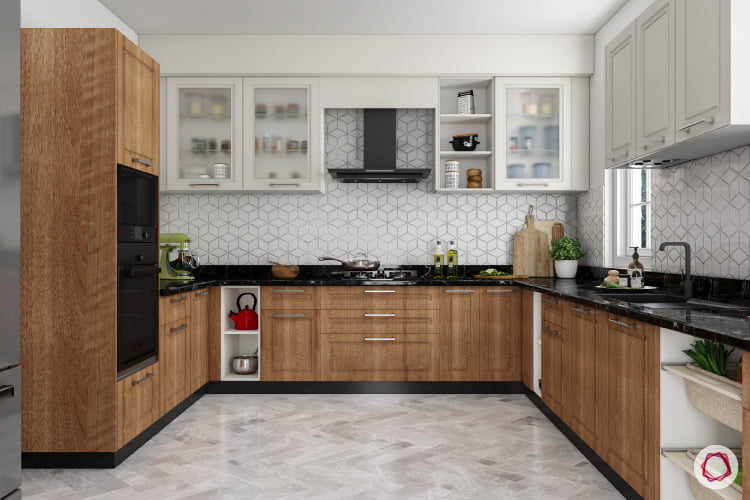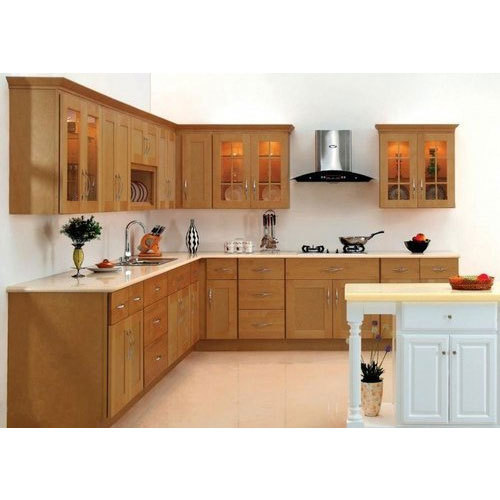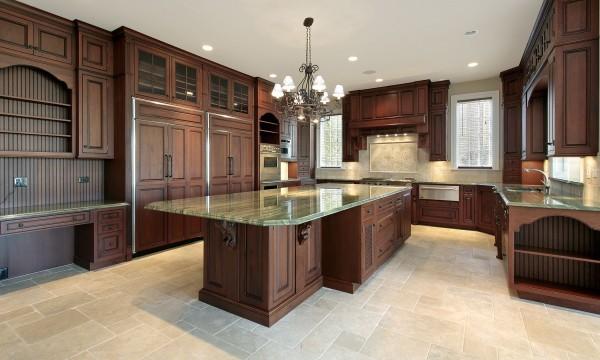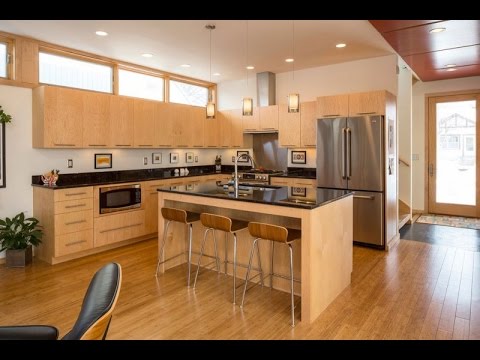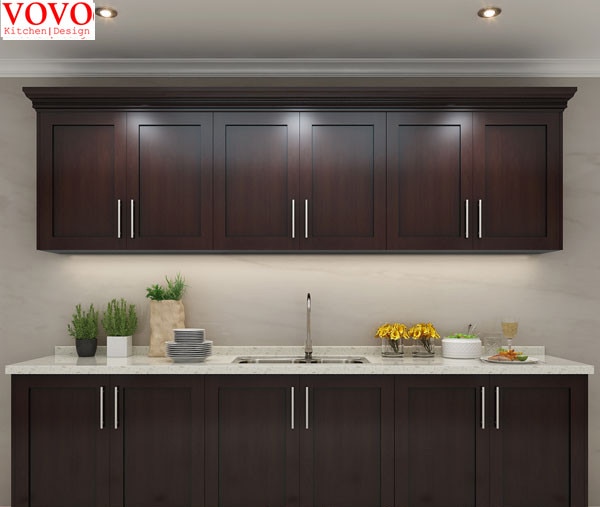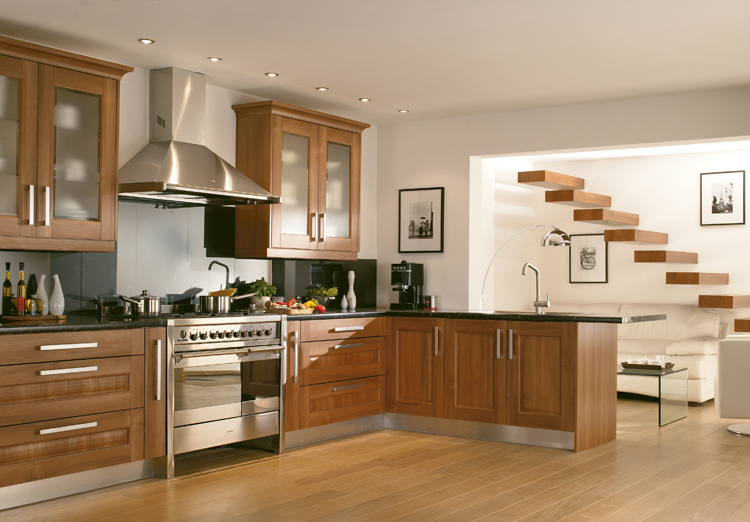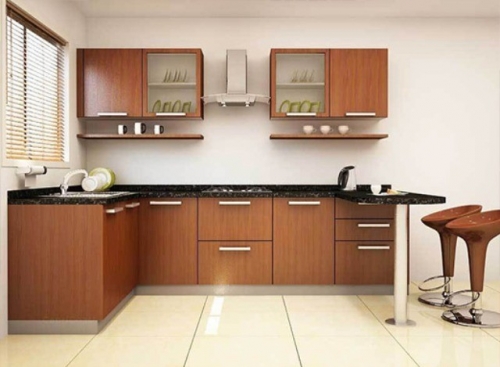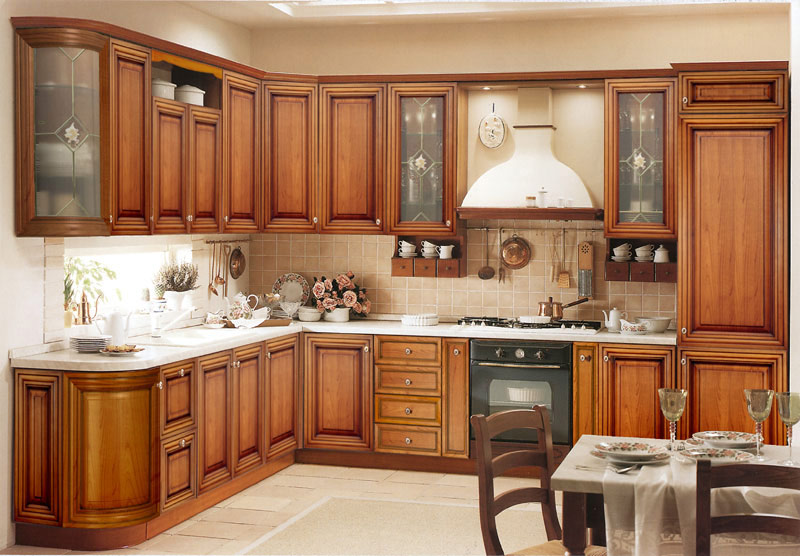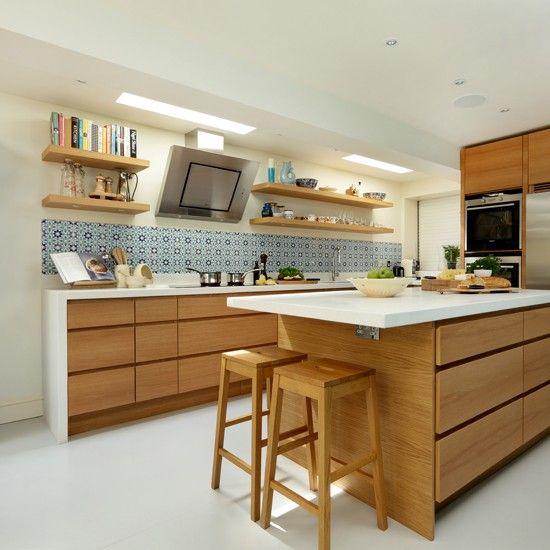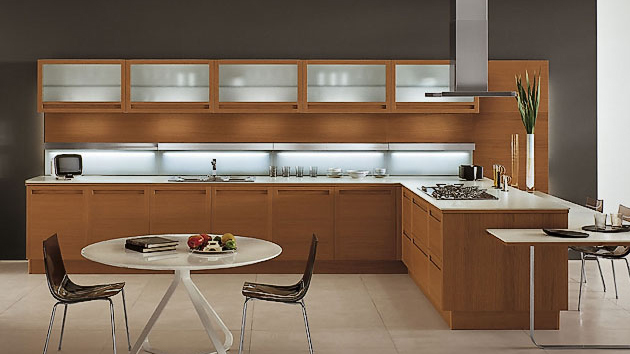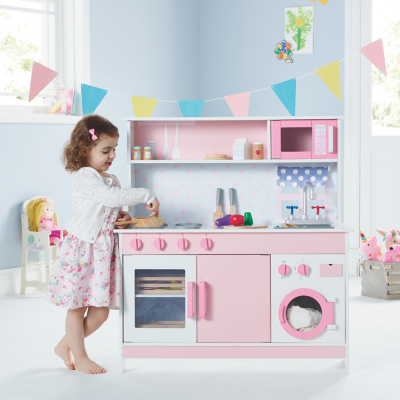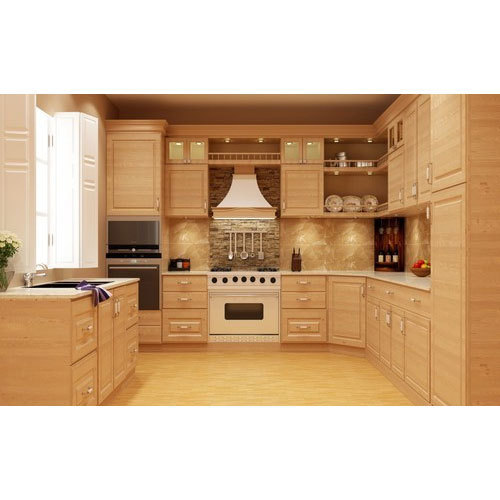In the area of interior design, too, the trend is increasingly towards environmentally conscious and ecological living. Wooden kitchens have never been so popular as in this time.
Not only does wood as a material for your kitchen fronts improve the indoor climate, it also contributes significantly to overall well-being. Wood kitchen fans rave about the homely living ambience. But that alone is not the reason for a wood kitchen. Also the design with the grains and patterns of the wood kitchen with its unmistakable look stands for uniqueness. So, in principle, every wood kitchen with the wood’s own grain is unique.
The differences of the different wooden kitchens
What’s so special about a wood kitchen? What is the design of the wood kitchen maintenance and what are the differences between the different types of wood kitchen? In a real solid wood kitchen, the kitchen furniture is made entirely of solid wood. In addition, manufacturers of wooden kitchens can access different woods.
In contrast, most solid wood kitchens are often offered only with solid wood fronts. The advantage is that these kitchens are not as heavy as solid wood kitchens. You do not need a structural engineer to calculate if the kitchen floor will withstand the load. In addition, a kitchen made of solid wood in the price segment is located much higher.
Under the name “real wood kitchens are traded wooden kitchens, in which filling or front are made of real wood veneer, which is glued on MDF boards. Also in this area different processing options for the material are given. It can be painted, brushed or whitewashed. In addition, sturdy and easy-care wood worktops are usually chosen for solid wood kitchens.
The nature of the care of your wood kitchen is determined by the material condition. If the wood kitchen is made of treated real wood, it can easily be cleaned with a mild detergent and a damp cloth.
Kitchen made of solid wood
For the production of a solid wood kitchen only solid and natural woods are used for the worktops, the fronts and the body. Very often, wood species such as beech, pine, cherry or oak are used.
Each of these types of wood has advantages and disadvantages as well as special properties. Pine wood is cheaper than cherry, but softwood but not as durable and robust as hardwoods. The hardwoods include beech and oak. Especially in the sink, they prove to be much less sensitive to humidity occurring in every kitchen.
Moisture is one of the reasons why all woods are covered with protection. This is achieved, for example, by using wax, oil or varnish. If damp objects are deposited on waxed or oiled surfaces, the surfaces tend to stain. This fact makes the surfaces relatively dependent on care, as the protective layer must be renewed more often.
The advantage of a solid wood kitchen is that for minor damage a carpenter can be assigned to carry out the repair. An older kitchen shines after a wood surface treatment in new splendor. This is not possible with a plastic kitchen.
Kitchen in solid wood
A solid wood kitchen consists for the most part of solid wood. This mainly affects the kitchen elements, but not all parts. So it may be that for drawer bottoms or back walls are made of cheaper woods. Often the body is made of blockboard or high quality three-layer boards. This guarantees cost-effective production.
Compared to a solid wood kitchen, the advantages of the solid wood kitchen are clearly in the range of the price and the weight. At first glance, you can hardly distinguish a solid wood kitchen from a solid wood kitchen.
Kitchen made of real wood
A cheap alternative to solid wood or solid wood kitchens is the real wood kitchen. The conventional body is made of chipboard or MDF boards and the surfaces are finished with a veneer made of real wood. To protect the approximately 1 mm thick real wood veneer, it is treated with a protective varnish.
The advantage of veneer kitchens compared to plastic kitchens is that, firstly, the veneer kitchen is more robust and, secondly, it has the appearance of a real wood kitchen.
Care of the wood kitchen
Naturally, wood as a natural material reacts to environmental influences. If the wood is exposed to too high humidity, it will damage it. It starts to swell or rot. For this reason, wet spots on the surfaces should be rubbed dry and the humidity in the room air kept as low as possible.
This assumes that it is ventilated during cooking, so that the wooden surfaces of the kitchen can not fog up with steam. In contrast, the heating caused by the dry air in winter can cause the wood to dry out and crack.
To clean the surfaces, do not use sharp or abrasive substances or objects. Cleaning agents based on synthetic resin or nitro, but also scrubbing agents scourers or scouring pads damage the surfaces. Too intensive care can attack or even destroy the protective lacquer in a real wood kitchen.
If you are not sure about having the right care product, you should first test it on a non-visible surface. Another important point is to always follow the direction of the grain when wiping. This way you get a pore-deep cleaning and at the same time protect the surfaces.
Perfect combination of wooden kitchens
Whether the classic country kitchen or the modern solid wood kitchen, both convince not only by their production of high-quality wood species, but also by homely appearance and comfort. A real wood kitchen you can easily adapt to any style, regardless of whether the furnishing style is modern or rural. In addition, you can create exciting and harmonious contrasts by combining wood with basket, glass, stainless steel or iron.
For planning consult an experienced kitchen consultant.
A good kitchen display will include wooden kitchens of all types from top manufacturers. Here, however, prices, kitchen and kitchen equipment will vary. For a layman it is quite difficult to find the right wood kitchen in the planned budget due to the often not visible differences of the wood species.
 savillefurniture Interior Design Ideas
savillefurniture Interior Design Ideas
